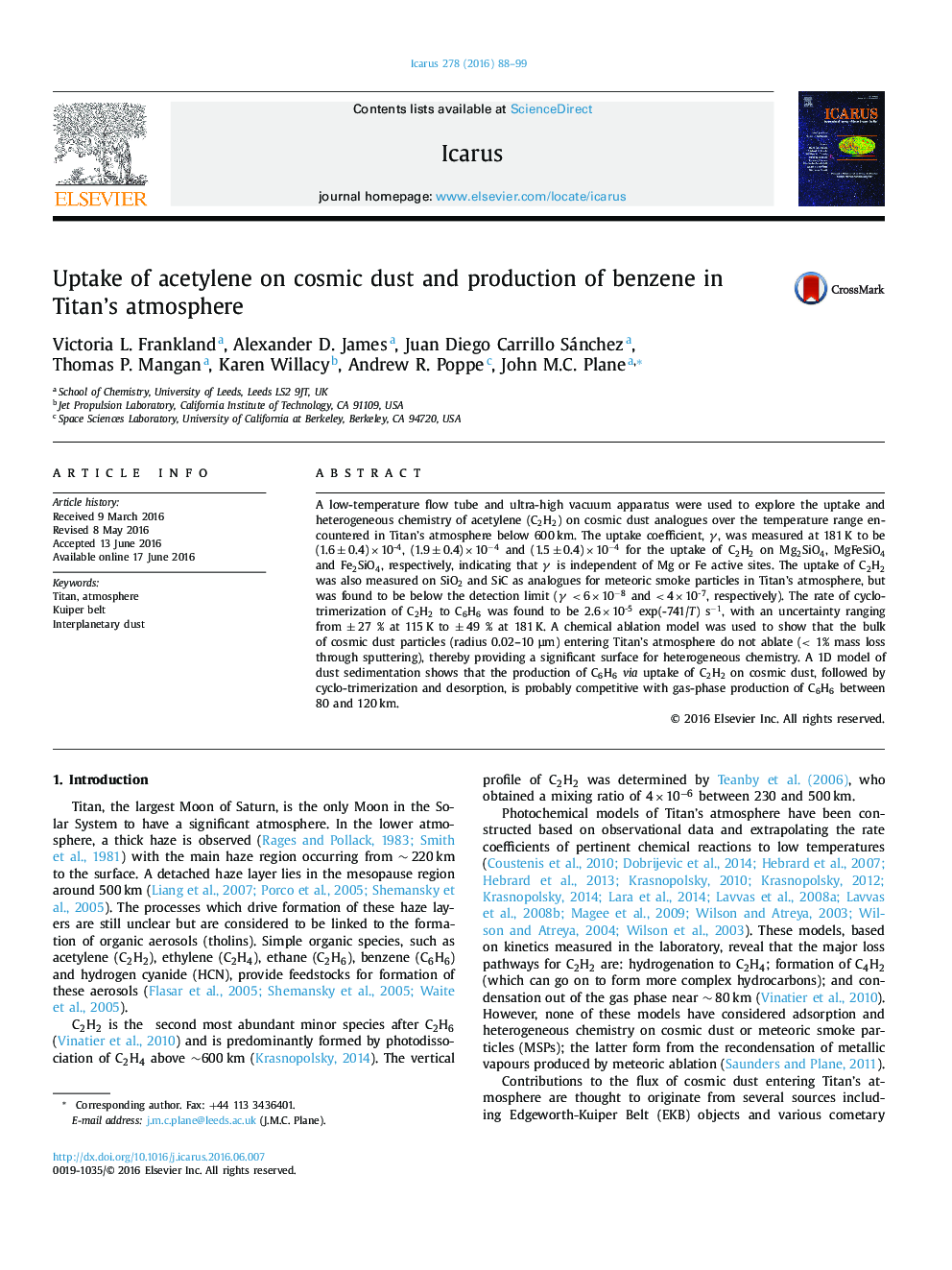| Article ID | Journal | Published Year | Pages | File Type |
|---|---|---|---|---|
| 8134840 | Icarus | 2016 | 12 Pages |
Abstract
A low-temperature flow tube and ultra-high vacuum apparatus were used to explore the uptake and heterogeneous chemistry of acetylene (C2H2) on cosmic dust analogues over the temperature range encountered in Titan's atmosphere below 600 km. The uptake coefficient, γ, was measured at 181 K to be (1.6 ± 0.4) Ã 10-4, (1.9 ± 0.4) Ã 10â4 and (1.5 ± 0.4) Ã 10â4 for the uptake of C2H2 on Mg2SiO4, MgFeSiO4 and Fe2SiO4, respectively, indicating that γ is independent of Mg or Fe active sites. The uptake of C2H2 was also measured on SiO2 and SiC as analogues for meteoric smoke particles in Titan's atmosphere, but was found to be below the detection limit (γ < 6 Ã 10â8 and < 4 Ã 10-7, respectively). The rate of cyclo-trimerization of C2H2 to C6H6 was found to be 2.6 Ã 10-5 exp(-741/T) sâ1, with an uncertainty ranging from ± 27 % at 115 K to ± 49 % at 181 K. A chemical ablation model was used to show that the bulk of cosmic dust particles (radius 0.02-10 µm) entering Titan's atmosphere do not ablate (< 1% mass loss through sputtering), thereby providing a significant surface for heterogeneous chemistry. A 1D model of dust sedimentation shows that the production of C6H6via uptake of C2H2 on cosmic dust, followed by cyclo-trimerization and desorption, is probably competitive with gas-phase production of C6H6 between 80 and 120 km.
Related Topics
Physical Sciences and Engineering
Earth and Planetary Sciences
Space and Planetary Science
Authors
Victoria L. Frankland, Alexander D. James, Juan Diego Carrillo Sánchez, Thomas P. Mangan, Karen Willacy, Andrew R. Poppe, John M.C. Plane,
